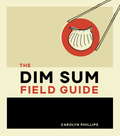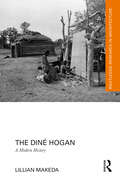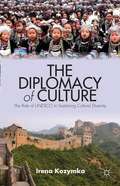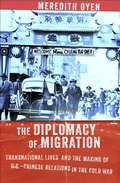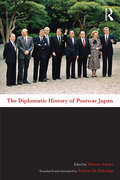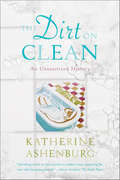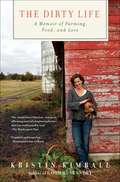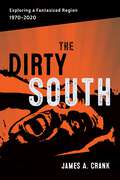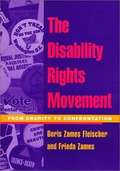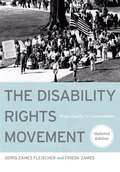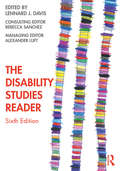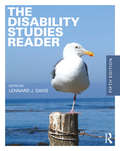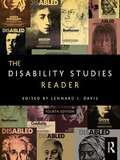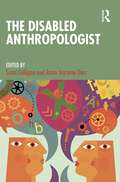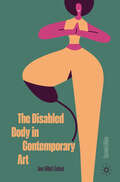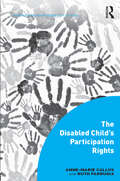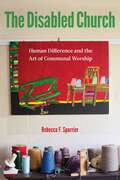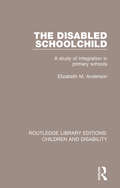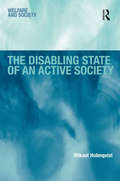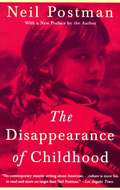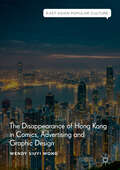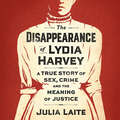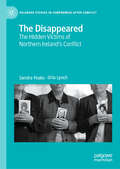- Table View
- List View
The Dim Sum Field Guide: A Taxonomy of Dumplings, Buns, Meats, Sweets, and Other Specialties of the Chinese Teahouse
by Carolyn PhillipsA whimsically illustrated yet authoritative guide to the "taxonomy" of dim sum, based on a popular Lucky Peach story.Author and illustrator Carolyn Phillips demystifies the rich, nuanced culinary institution of teahouse snacks in The Dim Sum Field Guide, a pocket-size, definitive resource featuring 80 hand-drawn illustrations. With entries for all the dim sum classics--including siu mai, xiaolongbao, char siu, roast duck, and even sweets like milk tarts and black sesame rolls--this handy reference is perfect for bringing on-the-go to your next dim sum outing. Armchair travelers and Asian food enthusiasts alike will be delighted by this detailed yet accessible look at the distinctly Chinese art of eating well.
The Dine (Reading Street)
by Scott ForesmanThese readers develop and extend the unit and weekly concept. Teachers can use this text to extend the weekly vocabulary and comprehension skills and strategies. These readers are 1 to 2 levels above grade level.
The Dinka of the Sudan
by Francis Mading DengCase study that presents & interprets the rich qualities of Dinka life. The reader learns of the structure of society, sex roles, courtship, kinship, age-sets & rivalries, the family, property, mores, law, religion, philosophy, poetry, & dance.
The Diné Hogan: A Modern History (Routledge Research in Architecture)
by Lillian MakedaOver the course of their history, the Navajo (Diné) have constructed many types of architecture, but during the 20th century, one building emerged to become a powerful and inspiring symbol of tribal culture. This book describes the rise of the octagonal stacked-log hogan as the most important architectural form among the Diné.The Navajo Nation is the largest Indian reservation in the United States and encompasses territory from within Arizona, New Mexico, and Utah, where thousands of Native American homes, called hogans, dot the landscape. Almost all of these buildings are octagonal. Whether built from plywood nailed onto a wood frame or with other kinds of timber construction, octagonal hogans derive from the stacked-log hogan, a form which came to prominence around the middle of the last century. The stacked-log hogan has also influenced public architecture, and virtually every Diné community on the reservation has a school, senior center, office building, or community center that intentionally evokes it. Although the octagon recurs as a theme across the Navajo reservation, the inventiveness of vernacular builders and professional architects alike has produced a wide range of octagonally inspired architecture. Previous publications about Navajo material culture have emphasized weaving and metalwork, overlooking the importance of the tribe’s built environment. But, populated by an array of octagonal public buildings and by the hogan – one of the few Indigenous dwellings still in use during the 21st century – the Navajo Nation maintains a deep connection with tradition. This book describes how the hogan has remained at the center of Diné society and become the basis for the most distinctive Native American landscape in the United States.The Diné Hogan: A Modern History will appeal to scholarly and educated readers interested in Native American history and American architecture. It is also well suited to a broad selection of college courses in American studies, cultural geography, Native American art, and Native American architecture.
The Diplomacy of Culture
by Irena KozymkaCultural diversity, because it is perceived to have significant security, developmental, and social implications, is fast becoming one of the major political issues of the day. At the international level, it overlaps with the now extensive debates on multiculturalism within states. This work shows how cultural diversity challenges the understanding of international relations as relations between states and, by looking at the issue through the magnifying glass of an international organization, offers innovative insights into the interplay between various levels of international society. The book examines in particular the role of UNESCO, the only United Nations agency responsible for culture and the main forum for international diplomacy on the issue of cultural diversity.
The Diplomacy of Migration: Transnational Lives and the Making of U.S.-Chinese Relations in the Cold War (The United States in the World)
by Meredith OyenDuring the Cold War, both Chinese and American officials employed a wide range of migration policies and practices to pursue legitimacy, security, and prestige. They focused on allowing or restricting immigration, assigning refugee status, facilitating student exchanges, and enforcing deportations. The Diplomacy of Migration focuses on the role these practices played in the relationship between the United States and the Republic of China both before and after the move to Taiwan. Meredith Oyen identifies three patterns of migration diplomacy: migration legislation as a tool to achieve foreign policy goals, migrants as subjects of diplomacy and propaganda, and migration controls that shaped the Chinese American community.Using sources from diplomatic and governmental archives in the United States, the Republic of China on Taiwan, the People's Republic of China, and the United Kingdom, Oyen applies a truly transnational perspective. The Diplomacy of Migration combines important innovations in the field of diplomatic history with new international trends in migration history to show that even though migration issues were often considered "low stakes" or "low risk" by foreign policy professionals concerned with Cold War politics and the nuclear age, they were neither "no risk" nor unimportant to larger goals. Instead, migration diplomacy became a means of facilitating other foreign policy priorities, even when doing so came at great cost for migrants themselves.
The Diplomatic History of Postwar Japan
by Robert D. Eldridge Makoto IokibeWinner of the prestigious Yoshida Shigeru Prize 1999 for the best book in public history when it was published in its original Japanese, this book presents a comprehensive and up-to-date overview of Japan’s international relations from the end of the Pacific War to the present. Written by leading Japanese authorities on the subject, it makes extensive use of the most recently declassified Japanese documents, memoirs, and diaries. It introduces the personalities and approaches Japan’s postwar leaders and statesmen took in dealing with a rapidly changing world and the challenges they faced. Importantly, the book also discusses the evolution of Japan’s presence on the international stage and the important – if underappreciated role – Japan has played. The book examines the many issues which Japan has had to confront in this important period: from the occupation authorities in the latter half 1940s, to the crisis-filled 1970s; from the post-Cold War decade to the contemporary war on terrorism. The book examines the effect of the changing international climate and domestic scene on Japan’s foreign policy; and the way its foreign policy has been conducted. It discusses how the aims of Japan’s foreign relations, and how its relationships with its neighbours, allies and other major world powers have developed, and assesses how far Japan has succeeded in realising its aims. It concludes by discussing the current state of Japanese foreign policy and likely future developments.
The Dirt on Clean: An Unsanitized History
by Katherine AshenburgA spirited chronicle of the West's ambivalent relationship with dirt The question of cleanliness is one every age and culture has answered with confidence. For the first-century Roman, being clean meant a two-hour soak in baths of various temperatures, scraping the body with a miniature rake, and a final application of oil. For the aristocratic Frenchman in the seventeenth century, it meant changing your shirt once a day and perhaps going so far as to dip your hands in some water. Did Napoleon know something we didn't when he wrote Josephine "I will return in five days. Stop washing"? And why is the German term Warmduscher—a man who washes in warm or hot water—invariably a slight against his masculinity? Katherine Ashenburg takes on such fascinating questions as these in Dirt on Clean, her charming tour of attitudes to hygiene through time.What could be more routine than taking up soap and water and washing yourself? And yet cleanliness, or the lack of it, is intimately connected to ideas as large as spirituality and sexuality, and historical events that include plagues, the Civil War, and the discovery of germs. An engrossing fusion of erudition and anecdote, Dirt on Clean considers the bizarre prescriptions of history's doctors, the hygienic peccadilloes of great authors, and the historic twists and turns that have brought us to a place Ashenburg considers hedonistic yet oversanitized.
The Dirty Life: On Farming, Food, and Love
by Kristin KimballFrom a &“graceful, luminous writer with an eye for detail&” (Minneapolis Star Tribune), this riveting memoir explores a year on a sustainable farm.When Kristin Kimball left New York City to interview a dynamic young farmer named Mark, her world changed. On an impulse, she shed her city self and started a new farm with him on five hundred acres near Lake Champlain. The Dirty Life is the captivating chronicle of the couple&’s first year on Essex Farm, from the cold North Country winter through their harvest-season wedding in the loft of the barn. Kristin and Mark&’s plan to grow everything needed to feed a community was an ambitious idea, and a bit romantic. It worked. Every Friday evening, all year round, over a hundred people travel to Essex Farm to pick up their weekly share of the &“whole diet&”—beef, pork, chicken, milk, eggs, maple syrup, grains, flours, dried beans, herbs, fruits, and forty different vegetables—produced by the farm. In The Dirty Life, Kristin discovers the wrenching pleasures of physical work, learns that good food is at the center of a good life, falls deeply in love, and finally finds the engagement and commitment she craved in the form of a man, a small town, and a beautiful piece of land.
The Dirty South: Exploring a Fantasized Region, 1970–2020 (Southern Literary Studies)
by James A. CrankThe Dirty South examines the shifting significances of the South as a constructed, fantasized region in the American psyche, particularly its frequent association with tropes of dirt that emphasize soil, garbage, trash, grit, litter, mud, swamp water, slime, and pollution. Beginning with iconic works from the 1970s such as Deliverance and The Texas Chainsaw Massacre, James A. Crank traces the image of a “dirty” South into the twenty-first century to explore the social, political, and psychological effects of the region’s hold on the imaginations of southerners and nonsoutherners alike.With a focus on media forms through which southern identity gets articulated and questioned—including horror movies, Swamp Thing comics, and popular music by artists such as Waylon Jennings and OutKast—The Dirty South probes the sustained fascination with southern dirtiness while reflecting on its causes and consequences since the end of the civil rights era. Highlighting the period from 1970 to 2020, during which the South began to represent several new possible identities for the nation as a whole and for the area itself, Crank considers the ways that southerners have used depictions of dirt to create and police boundaries and to contest those boundaries. Each chapter pairs prominent literary or cultural texts from the 1970s with more contemporary works, such as Jordan Peele’s film Get Out, which recycle similar investments or, critically, challenge the inherent whiteness of the earlier images.By historicizing fantasies of the region and connecting them to the first decades of the twenty-first century, The Dirty South reveals that notions about southern dirtiness proliferate not because they lend authenticity or relevancy to the U.S. South, but because they aid so conspicuously in the zombified work of tethering investors (real and imagined) to a graveyard of ideas.
The Disability Rights Movement: From Charity To Confrontation
by Doris Z. Fleischer Freida Zames<P>Based on interviews with almost a hundred activists, this book provides a detailed history of the struggle for disability rights in the United States. It is a complex story of shifts in consciousness and shifts in policy, of changing focuses on particular disabilities such as blindness, deafness, polio, quadriplegia, psychiatric and developmental disabilities, chronic conditions (for example, cancer and heart disease), AIDS, and of activism and policymaking across disabilities. <P>Referring to the Americans with Disabilities Act as "every American's insurance policy," the authors recount the genesis of this civil rights approach to disability, from the almost forgotten disability activism of the 1930s, to the independent living movement of the 1970s, to the call for disability pride of the 1990s. Like other civil rights struggles, the disability rights movement took place in the streets and in the courts as activists fought for change in the schools, the workplace, and in the legal system. They continue to fight for effective access to the necessities of everyday life-to telephones, buses, planes, public buildings, restaurants, and toilets. <P>The history of disability rights mirrors the history of the country. Each World War sparked changes in disability policy and changes in medical technology as veterans without limbs and with other disabilities returned home. The empowerment of people with disabilities has become another chapter in the struggles over identity politics that began in the 1960s. <P>Today, with the expanding ability of people with disabilities to enter the workforce and a growing elderly population, issues like longterm care are becoming increasingly significant at a time when HMOs are trying to contain health care expenditures.
The Disability Rights Movement: From Charity to Confrontation, Updated Edition
by Frieda Zames Doris Zames FleischerA newly updated account of the struggle for disability rights in the U.S.
The Disability Studies Reader
by Lennard J. DavisDisability studies has gone from being a relatively unknown field to one of increasing importance in the social sciences. The sixth edition of The Disability Studies Reader brings in new topics, scholars, writers, artists, and essays to address links between ableism and imperialism; disability bioethics; and the relationship between disability agency, social policy, and decarceration. There are as many meanings and experiences of disability as there are disabled people, and this diversity ensures that the work of the field will continue to evolve. Fully revised and brought up to date, this volume addresses a wider range of geographical and cultural contexts, and many pay specific attention to the intersections between disability and race, gender, and sexuality. The growing interest and activism around the issue of neuroatypicality is also reflected in a new section on neurodivergence. The Disability Studies Reader remains an excellent touchstone for students in disability studies courses across the disciplines, including the social sciences, English literature, and psychology.
The Disability Studies Reader
by Lennard J. DavisThe fifth edition of The Disability Studies Reader addresses the post-identity theoretical landscape by emphasizing questions of interdependency and independence, the human-animal relationship, and issues around the construction or materiality of gender, the body, and sexuality. Selections explore the underlying biases of medical and scientific experiments and explode the binary of the sound and the diseased mind. The collection addresses physical disabilities, but as always investigates issues around pain, mental disability, and invisible disabilities as well. Featuring a new generation of scholars who are dealing with the most current issues, the fifth edition continues the Reader’s tradition of remaining timely, urgent, and critical.
The Disability Studies Reader, 4th Edition
by Lennard J. DavisThe Fourth Edition of the Disability Studies Reader breaks new ground by emphasizing the global, transgender, homonational, and posthuman conceptions of disability. Including physical disabilities, but exploring issues around pain, mental disability, and invisible disabilities, this edition explores more varieties of bodily and mental experience. New histories of the legal, social, and cultural give a broader picture of disability than ever before. Now available for the first time in eBook format 978-0-203-07788-7.
The Disabled Anthropologist
by Sumi Colligan Anna Jaysane-DarrThis book brings much needed attention to disabled anthropologists, making clear that “disabled” and “anthropologist” belong together. The disabled anthropologists who contribute to this volume and on which these chapters focus have refused erasure from a profession that would ignore their critiques and creativity. Applying autoethnographic, photographic, and poetic venues, the contributors assess the drawbacks of their anthropology training programs, the limitations of accessibility practices in the academy, and how their own embodiments and the contingencies of their research and research settings have facilitated the discovery of novel methodologies and insights. Collectively this volume’s contributors demonstrate a shared concern for the wellbeing of disabled ethnographers and interlocutors, whether working with Colombian refugees in Ecuador or those living with chronic pain in Michigan.The Disabled Anthropologist is essential reading for students and scholars working in cultural and medical anthropology.
The Disabled Body in Contemporary Art
by Ann Millett-GallantThe second edition offers an essential update to the foundational first edition, The Disabled Body in Contemporary Art. Featuring updated chapters and case studies, this second edition will not only expand on the first edition but will bring a new focus to contemporary disabled artists and their embodied, multimedia work.
The Disabled Child's Participation Rights (Interdisciplinary Disability Studies)
by Anne-Marie Callus Ruth FarrugiaThe United Nations Convention on the Rights of Persons with Disabilities is the only UN treaty to date in which the people who are its target, that is disabled people, were actively involved in its drafting and the only one which requires the active participation of disabled people in its implementation. This does not, of course, automatically guarantee the direct participation of all disabled people. This is especially so for children with disabilities, whose status as legal minors may inhibit them from participating in decisions affecting their lives. This book focuses on the participation rights of the disabled child with regard to health, education, homelife and relationships, highlighting ways in which these rights are safeguarded and promoted throughout the EU, as well as exploring the factors that put these rights at risk. Finally, this groundbreaking text analyses whether disabled children’s needs for assistance in order to realise their participation rights results in fewer opportunities to participate or in an increase in support in order for them to be able to do so.
The Disabled Church: Human Difference and the Art of Communal Worship
by Rebecca F. SpurrierHow do communities consent to difference? How do they recognize and create the space and time necessary for the differences and disabilities of those who constitute them? Christian congregations often make assumptions about the shared abilities, practices, and experiences that are necessary for communal worship. The author of this provocative new book takes a hard look at these assumptions through a detailed ethnographic study of an unusual religious community where more than half the congregants live with diagnoses of mental illness, many coming to the church from personal care homes or independent living facilities. Here, people’s participation in worship disrupts and extends the formal orders of worship. Whenever one worships God at Sacred Family Church, there is someone who is doing it differently.Here, the author argues, the central elements and the participation in the symbols of Christian worship raise questions rather than supply clear markers of unity, prompting the question, What do you need in order to have a church that assumes difference at its heart?Based on three years of ethnographic research, The Disabled Church describes how the Sacred Family community, comprising people with very different mental abilities, backgrounds, and resources, sustains and embodies a common religious identity. It explores how an ethic of difference is both helped and hindered by a church’s embodied theology. Paying careful attention to how these congregants improvise forms of access to a common liturgy, this book offers a groundbreaking theology of worship that engages both the fragility and beauty revealed by difference within the church. As liturgy requires consent to difference rather than coercion, an aesthetic approach to differences within Christian liturgy provides a frame for congregations and Christian liturgists to pay attention to the differences and disabilities of worshippers. This book creates a distinctive conversation between critical disability studies, liturgical aesthetics, and ethnographic theology, offering an original perspective on the relationship between beauty and disability within Christian communities. Here is a transformational theological aesthetics of Christian liturgy that prioritizes human difference and argues for the importance of the Disabled Church.
The Disabled Schoolchild: A Study of Integration in Primary Schools (Routledge Library Editions: Children and Disability #2)
by Anderson Elizabeth M.First published in 1973, this book considers the differences between mainstream schools and special educational needs schools, for children with learning disabilities. It contains a wealth of research data, case history material and reference to existing literature, designed to answer many questions which parents, heads, and schoolteachers have asked. Questions considered include whether children with disabilities do as well in ordinary schools as children without, whether they are as happy and well adjusted, and how they fit into the social structure of the class. The book also looks at whether much teasing occurs and how practical difficulties can be overcome.
The Disabling State of an Active Society (Welfare and Society)
by Mikael HolmqvistAcross the traditional welfare states of Europe, Australia, New Zealand and Canada there has been increasing emphasis on 'activation' by the unemployed as a tool for fighting unemployment. The core idea of activation programmes is the integration and empowerment of jobseekers through active work-related measures rather than passive income support. However, the empirical evidence of the efficacy of activation programmes is far from conclusive and there have been no systematic studies of the effects of activation programmes on the lives of the unemployed people who come into contact with them. This book is based on a detailed ethnographic study of the highly praised Swedish rehabilitation organization Samhall. The result is a key volume for those working and studying within welfare, poverty, disability and special needs.
The Disappearance of Childhood
by Neil PostmanThe author of Technopoly, suggests that childhood is a relatively recent invention, which came into being as the new medium of print imposed divisions between children and adults. But now these divisions are eroding under the barrage of television, which turns the adult secrets of sex and violence into popular entertainment and pitches both news and advertising at the intellectual level of ten-year-olds.
The Disappearance of Hong Kong in Comics, Advertising and Graphic Design (East Asian Popular Culture)
by Wendy Siuyi WongThis book examines Hong Kong’s struggle against the disappearance of its unique identity under the historical challenges of colonialism, in addition to the more recent reimposition of Chinese authoritarian government control, as reflected in three under-researched forms of visual media: comics, advertising and graphic design. Each section of the book focuses on one of these three forms, and each chapter focuses on one stage of Hong Kong’s changing cultural identity. The articulative position of this book is on studies of visual cultural history and media communication. Its case studies will broaden readers’ own cultural knowledge for a more international understanding. The Disappearance of Hong Kong in Comics, Advertising and Graphic Design advances the development of its three key subjects in terms of identity, communication and cultural politics, aiming to reach a wide range of multidisciplinary readers.
The Disappearance of Lydia Harvey: A true story of sex, crime and the meaning of justice
by Julia LaiteWINNER OF THE CWA ALCS GOLD DAGGER FOR NON-FICTION 1910, Wellington, New Zealand. Lydia Harvey is sixteen, working long hours for low pay, when a glamorous couple invite her to Buenos Aires. She accepts - and disappears. 1910, London, England. Amid a global panic about sex trafficking, detectives are tracking a ring of international criminals when they find a young woman on the streets of Soho who might be the key to cracking the whole case. As more people are drawn into Lydia's life and the trial at the Old Bailey, the world is being reshaped into a new, global era. Choices are being made - about who gets to cross borders, whose stories matter and what justice looks like - that will shape the next century. In this immersive account, historian Julia Laite traces Lydia Harvey through the fragments she left behind to build an extraordinary story of aspiration, exploitation and survival - and one woman trying to build a life among the forces of history.
The Disappeared: The Hidden Victims of Northern Ireland's Conflict (Palgrave Studies in Compromise after Conflict)
by Orla Lynch Sandra PeakeThis short book focuses on the Disappearances that occurred during the Troubles in Northern Ireland. Using in-depth interviews with thirteen families of those individuals who were abducted, murdered and secretly buried from the 1970's onwards, this book examines the experience of the families and communities left behind. Through an exploration of the historic and cultural origins of the contemporary IRA and how they came to be in the position of power within Catholic/Nationalist communities during the troubles, the context to the disappearances are presented. This book reviews the journey undertaken by the families, from the initial disappearance of their loved one and the suffocating silence that followed, through their coming together as a self-help group. It follows their lobbying on a national and international basis leading to the return of the bodies of some of their loved ones and the solidarity which leads them to fight on as a group to recover the bodies that remain missing. It also examines the involvement of the British and Irish and American governments in the set up of the International Commission for the Location of Victim's Remains and tells the story of the Clinton's personal involvement in supporting the families in their ongoing quest for recovery. It is written accessibly for researchers and practitioners.
